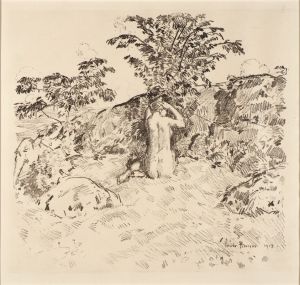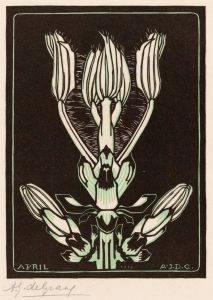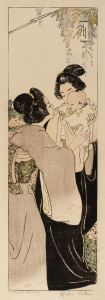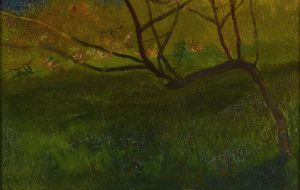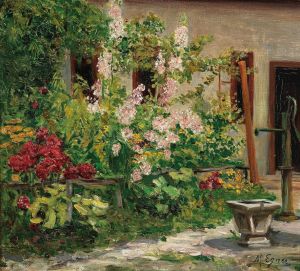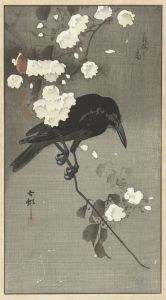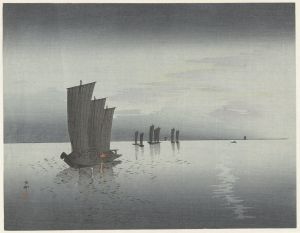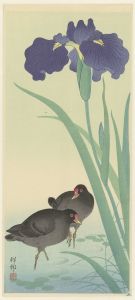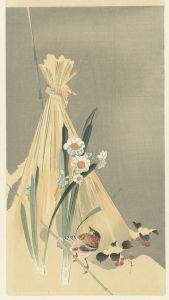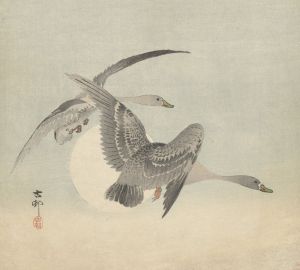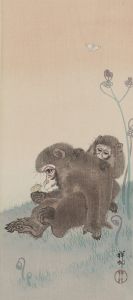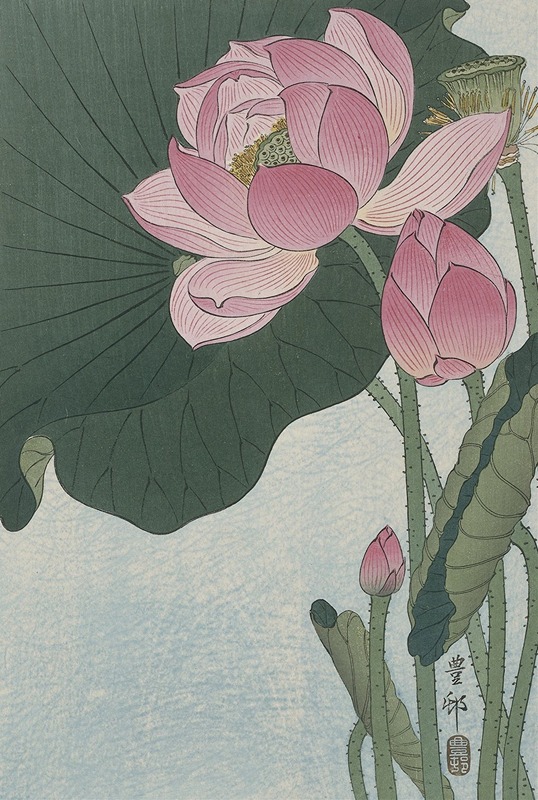
Blooming lotus flowers
A hand-painted replica of Ohara Koson’s masterpiece Blooming lotus flowers, meticulously crafted by professional artists to capture the true essence of the original. Each piece is created with museum-quality canvas and rare mineral pigments, carefully painted by experienced artists with delicate brushstrokes and rich, layered colors to perfectly recreate the texture of the original artwork. Unlike machine-printed reproductions, this hand-painted version brings the painting to life, infused with the artist’s emotions and skill in every stroke. Whether for personal collection or home decoration, it instantly elevates the artistic atmosphere of any space.
Ohara Koson (1877–1945) was a prominent Japanese artist known for his exquisite woodblock prints, particularly those depicting birds and flowers, a genre known as kachō-ga. His work is often associated with the shin-hanga movement, which revitalized traditional ukiyo-e art in the early 20th century by incorporating Western elements such as perspective and shading while maintaining traditional Japanese themes and techniques.
"Blooming Lotus Flowers" is one of Koson's celebrated works, showcasing his mastery in capturing the delicate beauty of nature. This piece exemplifies his ability to blend realism with the stylized elegance characteristic of Japanese art. The composition typically features lotus flowers in various stages of bloom, set against a serene backdrop that highlights their grace and tranquility. Koson's attention to detail is evident in the intricate depiction of the petals and leaves, as well as the subtle gradations of color that convey the softness and fragility of the flowers.
Koson's prints were primarily produced for export, catering to Western collectors who were fascinated by Japanese art. His works gained significant popularity in the United States and Europe, where they were appreciated for their aesthetic appeal and technical excellence. The shin-hanga movement, to which Koson contributed significantly, sought to rejuvenate traditional Japanese woodblock printing by collaborating with skilled artisans and publishers. This movement played a crucial role in preserving the art form during a time when it faced decline due to the rise of photography and Western art influences.
Koson's collaboration with publishers such as Watanabe Shozaburo was instrumental in the dissemination of his work. Watanabe was a key figure in the shin-hanga movement, and his partnership with artists like Koson helped bring Japanese prints to a global audience. The prints were often produced using high-quality materials and techniques, ensuring their longevity and appeal.
"Blooming Lotus Flowers" reflects Koson's deep appreciation for nature and his ability to convey its beauty through art. His work is characterized by a harmonious balance between composition, color, and form, which invites viewers to contemplate the serene and ephemeral qualities of the natural world. The lotus, a symbol of purity and enlightenment in many cultures, is a recurring motif in Japanese art, and Koson's depiction of it resonates with these themes.
Today, Ohara Koson's prints, including "Blooming Lotus Flowers," are highly sought after by collectors and art enthusiasts. They are considered valuable examples of the shin-hanga movement and are featured in numerous art collections and exhibitions worldwide. Koson's legacy endures through his contributions to the preservation and evolution of Japanese woodblock printing, and his works continue to inspire appreciation for the beauty and intricacy of nature as captured through the art of printmaking.





